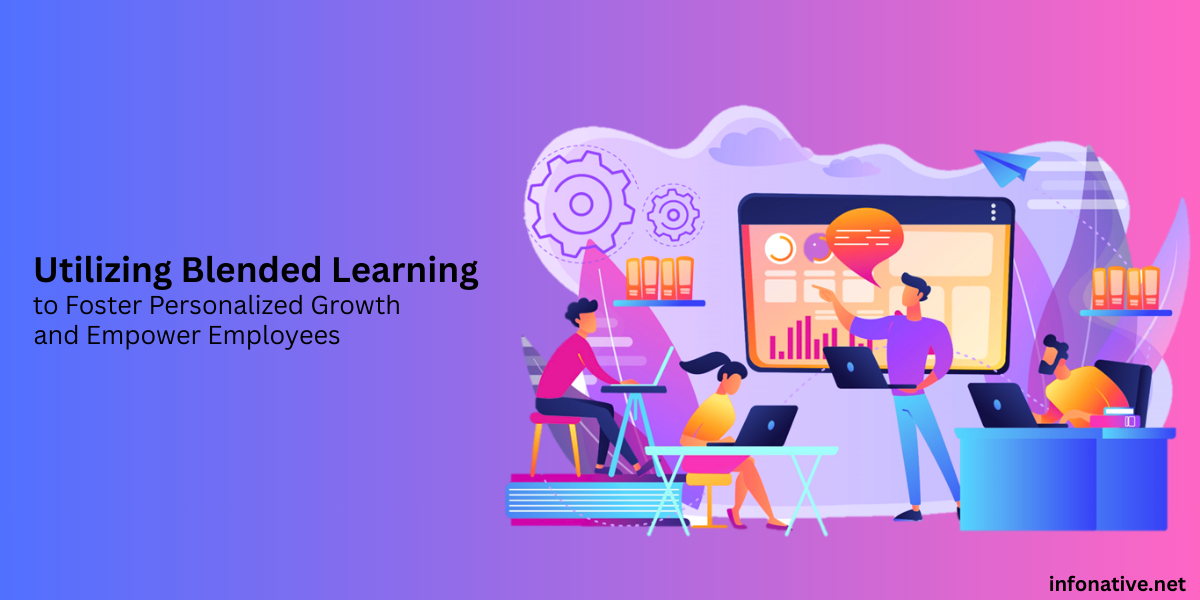Introduction to Blended Learning
Blended learning—often called hybrid learning—is a powerful approach that integrates traditional face-to-face instruction with digital and self-paced content. In the corporate world, it’s become more than just a buzzword; it’s now a foundational strategy for organizations aiming to foster personalized growth and employee empowerment. By mixing the best of both worlds—online and offline—companies are not only improving training outcomes but also creating environments where learning is dynamic, engaging, and tailored.
This approach benefits from real-time interaction while offering the autonomy and flexibility today’s professionals crave. With technology becoming more intuitive and remote work more prevalent, blending learning methodologies is no longer optional—it’s essential.
The Evolution of Corporate Training
Corporate training has traveled a long way—from lecture-heavy classrooms and printed manuals to interactive eLearning modules and virtual reality simulations. Initially, training was one-size-fits-all, but that model failed to meet the diverse learning needs and speeds of today’s workforce. Modern businesses now understand that personalized, ongoing learning isn’t just good practice—it’s key to organizational growth.
Why Personalized Growth Matters in the Workplace
When employees feel that their growth is supported, they become more engaged, loyal, and productive. Personalized growth ensures training is relevant to each learner's role, aspirations, and learning style. This targeted approach leads to better retention, higher performance, and improved morale.
• Boosts employee confidence
• Improves task efficiency
• Encourages innovation and initiative
• Reduces turnover through clear growth pathways
Blended learning supports all these goals by offering employees control over their learning journey while providing necessary guidance and structure.
How Blended Learning Empowers Employees
Flexibility and Accessibility
Employees can learn anytime, anywhere—perfect for remote or hybrid workers. This reduces stress and encourages self-discipline.
Improved Knowledge Retention
When digital content reinforces instructor-led sessions, employees absorb and retain more information.
Building Confidence Through Self-Paced Modules
Allowing learners to revisit materials at their own pace builds mastery and confidence.
Components of an Effective Blended Learning Strategy
Synchronous vs Asynchronous Learning
• Synchronous: Live webinars, instructor-led sessions
• Asynchronous: Pre-recorded videos, interactive modules. A successful blend usually includes both, adapting to various employee schedules and preferences.
Leveraging Learning Management Systems (LMS)
LMS platforms like Moodle, MindscrollLMS, and Docebo make it easy to manage course delivery, track progress, and gather feedback.
Incorporating Microlearning and Gamification
Bite-sized lessons (microlearning) paired with interactive elements such as quizzes and leaderboards boost engagement and improve completion rates.
How to Successfully Integrate Blended Learning into Your Organization
Assessing Current Training Needs
Begin by identifying gaps in existing training programs and employee skill sets.
Designing the Curriculum
Structure content into digestible chunks that combine theory and practical application.
Selecting the Right Tools and Platforms
Choose platforms that are scalable, user-friendly, and compatible with existing systems.
Training Managers and Instructors
Ensure they’re equipped to deliver and support both online and offline learning modules effectively.
Measuring the Success of Blended Learning Initiatives
Key Performance Indicators (KPIs)
Monitor indicators such as how many employees finish the training, how quickly they gain required skills, and how well they perform after completing the program.
Gathering Employee Feedback
Use surveys, focus groups, and LMS analytics to understand learner satisfaction and challenges.
Continuous Improvement Cycles
Consistently review feedback and adapt your strategy to align with changing requirements.
Common Challenges and How to Overcome Them
• Resistance to change: Offer incentives and communicate benefits clearly.
• Technology barriers: Provide training and technical support.
• Content overload: Use modular design and clear learning paths.
Future Trends in Blended Learning
• AI-driven personalization: Tailors learning paths using AI to match individual needs and boost engagement.
• Immersive technologies (AR/VR): Enhances learning through realistic, interactive virtual environments.
• Social and collaborative learning tools: Fosters peer interaction and teamwork through digital platforms.
• Data analytics for real-time progress tracking: Offers instant insights into learner performance for timely support.
As tech evolves, so will the ability to tailor learning experiences even further.
Conclusion
Blended learning is more than a training method—it’s a strategic tool for personalized development and employee empowerment. When done right, it builds a culture of continuous learning, prepares teams for future challenges, and drives measurable results. In today's fast-changing work landscape, companies that invest in blended learning are investing in sustainable growth and employee satisfaction.




